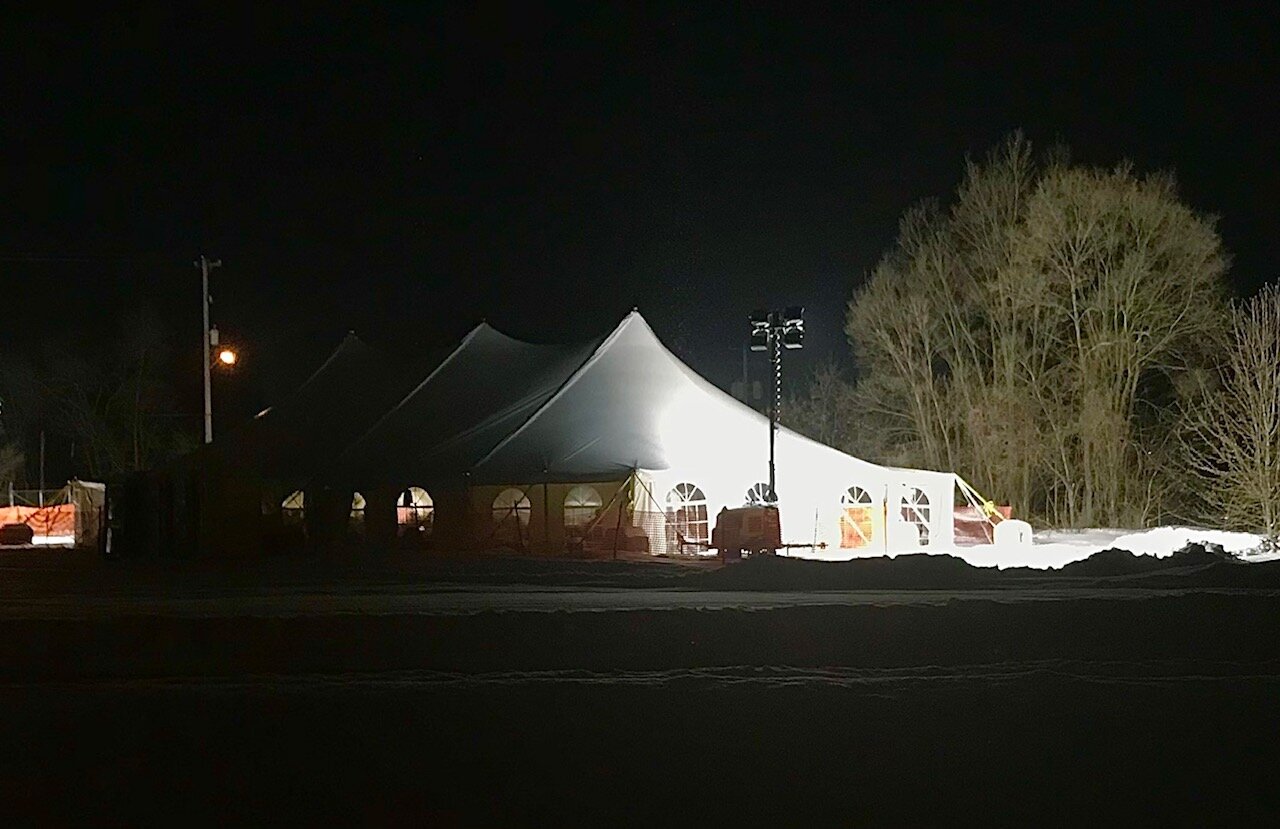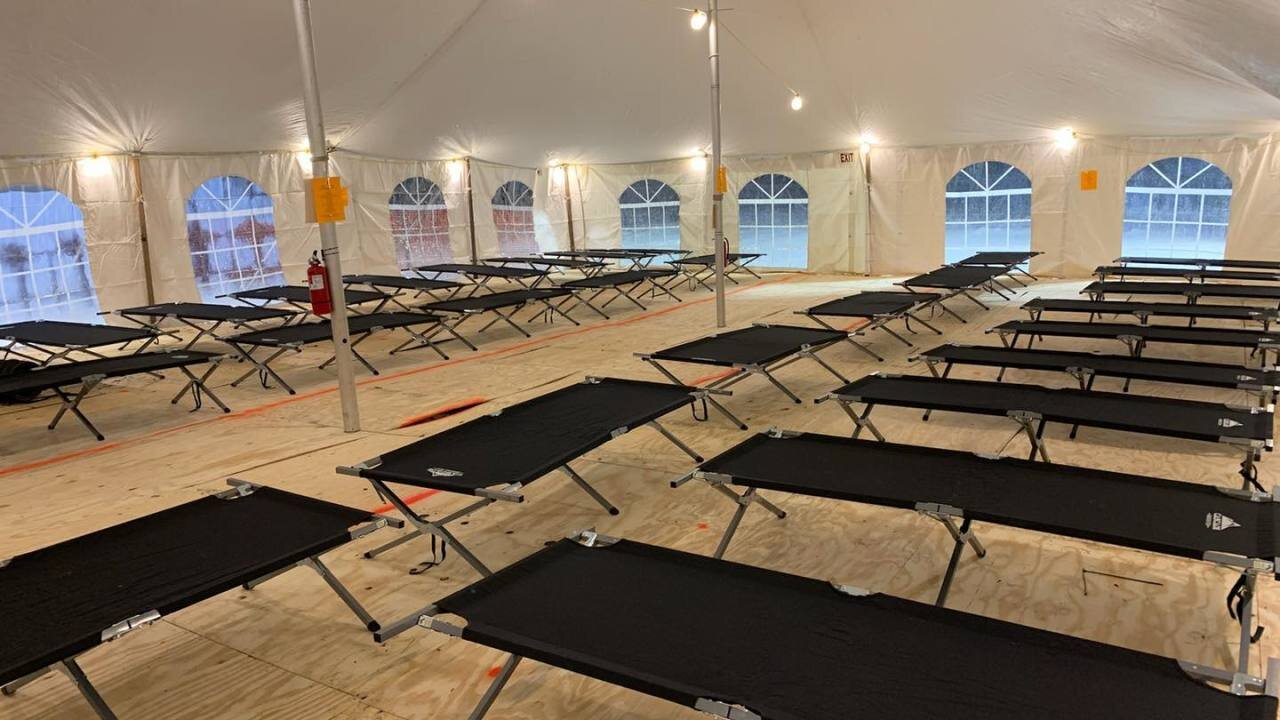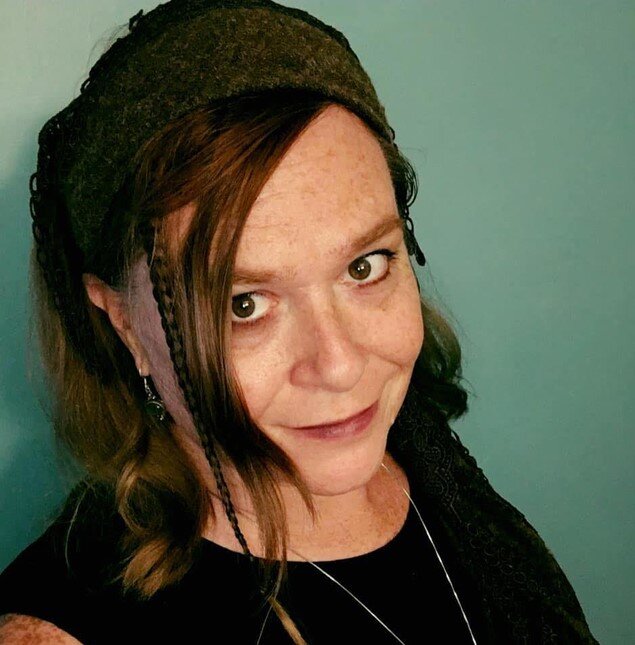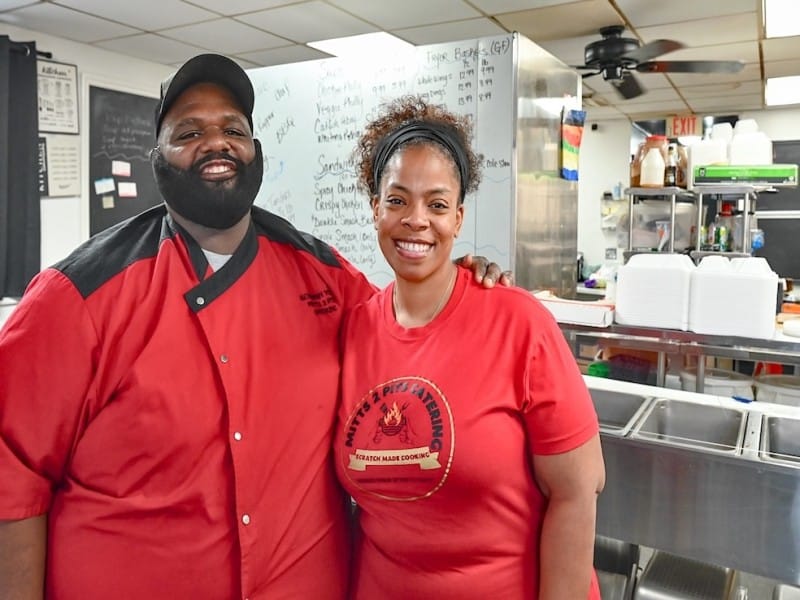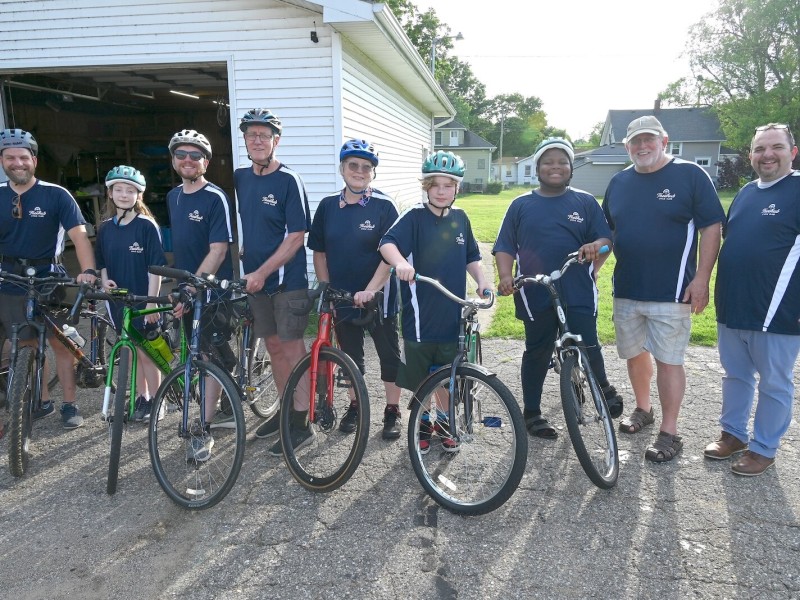So what happens now for the homeless? Continuum of Care seeks community-wide and long-term solutions
To make a lasting difference for those without homes in Kalamazoo County will take a communitywide effort, say those who work every day to end homelessness.
Editor’s note: This story is part of Southwest Michigan Second Wave’s On the Ground Kalamazoo series.
Its work may not be visible to many in the community but the Kalamazoo County Continuum of Care is regularly coordinating efforts to provide for the homeless through a number of organizations and outreach workers. And it is continually looking for long-term solutions to provide safe and dignified living options for those without homes.
“We’re providing as many opportunities and options as possible for people to self-direct their own lives into the spaces they want to be in,” says Sarah Jacobs, director of the Continuum of Care, a county-wide initiative led since last year by the United Way of the Battle Creek and Kalamazoo Region. The initiative is based on a national model to bring organizations and individuals together to work to ensure safe, healthy, and affordable housing in participating communities.
“We still have people going to Ministry with Community, The River (Church’s) day shelter, and Kalamazoo Gospel Mission,” says Jacobs. “They are all still options.”
But she says, “We know that not everybody’s going to go into the Gospel Mission, so we are trying to provide those other spaces.”
More specifically, they include:
• A temporary day shelter operated by Integrated Services of Kalamazoo since Dec. 2 at The River Church, at 517 Walbridge St.
• Day shelter and support services at Ministry with Community as well as emergency shelter at Open Doors, YWCA, and Catholic Charities Diocese of Kalamazoo (The Ark).
• Easier-to-access temporary housing for up to 12 individuals through a relatively new program called Lantern House. It is also operated by Integrated Services of Kalamazoo, with support from the City of Kalamazoo and the Kalamazoo Foundation for Excellence.
• Support for the redevelopment of the Knight’s Inn motel, a collaboration with the nonprofit LIFT Foundation and Integrated Services of Kalamazoo to make more than four dozen rooms available immediately to shelter the homeless from winter weather, with plans to convert its rooms into 60 studio apartments this spring and summer in order to provide longer-term housing. It is to be called the Lodge House.
• Temporary and permanent housing through ISK, Housing Resources Inc., and Catholic Charities Diocese of Kalamazoo.
The Continuum of Care worked in conjunction with the City of Kalamazoo to establish the just-closed temporary warming center downtown. The warming center was a large heated tent facility, erected on Feb. 6, and closed on Sunday, Feb. 21, in line with Kalamazoo County’s Extreme Temperature and Weather Policy and Plan. The plan looks to safeguard people from an extreme cold weather event. In general, that is one in which air temperature sinks below 5 degrees or where the wind chill is forecast to be below zero.
Use of the warming center ranged from a few people per day up to as many as 25 per day, according to information provided by the City of Kalamazoo, which operated the facility in collaboration with other agencies that provided ancillary services and food.
Asked what impact she thinks the loss of the warming center will have on people looking for shelter, Jacobs says, “We obviously want as many options on the table as we can have. We are definitely working towards other options.”
Volunteer efforts to help Kalamazoo’s homeless population are welcome, she says, and the desire to help people who need to be sheltered, fed, and supported is keen, she says. But so is the resolve to develop long-term planning to help. And that takes time.
Jacobs, 46, has insights on homelessness from having been homeless herself as an adolescent while living in Phoenix, Ariz.
We talked to her further about the work of the Continuum of Care. Here are some other questions we asked and her responses:
QUESTION: What else is being done to help the homeless?
ANSWER: “People living out in the elements and in the encampments is something that has been a part of Kalamazoo for a long time,” Jacobs says. “And it’s a part of most communities. So as far as what we’re doing … This is ongoing continuing work that we do in collaboration with all the agencies within our community. This isn’t just a one-agency problem. It isn’t just a one-entity problem. It’s a community problem that we have to address.”
She says that through the end of last week, about 70 people were living in rooms at the former Knight’s Inn motel at 1211 S. Westnedge Ave. The property is being purchased for $1.5 million by a nonprofit organization created by the Lift Foundation and it is being operated by Integrated Services of Kalamazoo to house homeless people on an emergency basis to get them out of the cold weather. ISK and the nonprofit Lift Foundation are partner organizations in the Continuum of Care.
“These kinds of things take time to get across the finish line,” Jacobs says, “and there are multiple things that we are continually working on, and have been working on.”
Q: Has there been anybody sick, frost-bitten or near death at the homeless camps as a result of the cold weather?
A: “I have not had any reports of that myself on our end or heard anything as it relates to that,” Jacobs said. “As it relates to health, we are working with public health (Kalamazoo County Health & Community Services) and coordinating the vaccination effort between public health and this population.”
Q: What is the big problem that COVID-19 causes for the homeless?
A: “It’s the ability to have a safe place to go,” she says. Of the pandemic, she says, “We were all told at the beginning of this thing to stay home and be safe. Right? Those are the same kinds of things that are needed for those without houses. … It’s having that safe place so you can self-quarantine and take care of your own needs. That’s going to always be our goal – to mitigate that, to look at solutions for that.”
Jacobs says the need to keep people socially distanced to prevent the spread of the virus means fewer people can be accommodated in places that are available to them.
“We have capacity issues,” she says. “We may have been able to have more people housed in certain areas. And that’s been reduced due to making sure we can keep people safe.”
Q: What lets you know the Continuum of Care is actually reaching the homeless population?
A: The Continuum of Care gets feedback from outreach workers “as they go out and relate with the folks out there on the ground. And find out what do they want. What do they need? What do they feel they need as opposed to us telling them what they need? (We’re) getting that feedback for self-directed care options for that community.”
They include outreach workers from HOPE Thru Navigation, Integrated Services of Kalamazoo, Catholic Charities Diocese of Kalamazoo, and Urban Alliance. The Continuum of Care brings together local service providers, public health officials and staff members of city and county government to meet and tackle problems.
“We have multiple groups that we coordinate with,” she says. “… So we do have a group that is specific to those front-line outreach workers. It’s an outreach coordination group. It coordinates all the outreach workers from every agency that has an outreach worker. We even have some people in there that represent some agencies that don’t have outreach workers but want to provide support to those folks. But we’re very much in contact weekly with those folks and getting feedback from them on what’s going on on the ground there.”
Jacobs said she and her three staff members work to coordinate activities and assist organizations that already working in the field. “We are not frontline workers, she says. “We do not want to take that role away from those who are.”
“Other than just going down (to the encampments) myself and, at a distance, kind of observing because I want to have that insight, I have not gone into the encampments and walked around and interacted with people because it’s something that we’ve been advised by Public Health that it’s just not a safe thing to do (referring to the spread of COVID-19). If you don’t have a reason to be in the encampment you probably shouldn’t be down there.”
The Continuum operates on an annual budget of about $300,000, provided by the U.S. Department of Housing and Urban Development, the City of Kalamazoo, the Kalamazoo Foundation for Excellence, the Stryker Johnston Foundation, the Kalamazoo Community Foundation and the United Way.
Q: You have homeless people who never go to the Kalamazoo Gospel Mission. How do you know you are reaching those people?
A: “The outreach groups,” Jacobs answers. “Those people actually go out to the encampments. They actually go to where people are staying and living. They don’t just go to the Gospel Mission. They’re out there communicating with people where they are.”
Q: Regarding the Kalamazoo Coalition for the Homeless, are you going to partner with them at all? Do you talk with them at all? (The Coalition is a grassroots group of concerned area people who formed just before Thanksgiving and have been working voluntarily to try to provide for the immediate needs of the homeless in the downtown area, including food, heaters, tents and other goods. Its leader has said it has an eye toward doing longer-range planning.)
A: “Absolutely. I had actually reached out to (Coalition leader) Leander Rabe directly. … We definitely invited them into the work that the CoC is doing, offered some infrastructure support. Because that’s what a CoC does, right? We help organizations whether they’re grassroots, nonprofits, whatever. Anybody who’s doing work within the homeless sector, we’re doing what we need to support those efforts to make sure there’s some safe things going on there and to make sure that they’re well supported.”
She says it has been more than two months since the CoC reached out. Jacobs says one of the administrators of the Coalition is Jason Knight, of the Urban Alliance, “who is plugging in to some of the work we’re doing.” But she says, “At this point, we don’t have a formal relationship (with the Coalition). I know that Jason is listed on their Facebook page as one of the administrators. So that’s probably the closest contact we have with them at this point.
“But again, we’re always open to that relationship and building that. The offer’s been made, for sure. We’re still here for anything anybody wants to get together and plug in to anywhere we can coordinate and collaborate.”
Q: What’s on the horizon that you’re working on that maybe people don’t know about?
A: “There are definitely long-term solutions that are working on continuously,” she says. “That’s a lot of what we’re working on.”
Although she said that without signed contracts and solid agreements, she cannot reveal them, “there are other projects that are being worked on.” She says the Knight’s Inn project didn’t happen overnight. “We’d been working on that for close to a year” and “at any point within that effort we were at different stages of possibility of what might be and what might not be. There are some things that fell through as we were working through those pieces to finally get to where we are now.”
Q: Is there an ongoing effort to find more permanent housing for the homeless?
A: “Absolutely,” she says. But she says she cannot talk about it until more things are solidified.
Q: Somewhere the idea surfaced to find unused structures that can be converted into housing, rather than build new structures or create new spaces. Is that what’s being considered?
A: “We’re considering any and all solutions,” Jacobs says. “There’s nothing that we have not explored. If people are saying, ‘Why don’t we do this?’ or ‘Why don’t we do that?’ Those things are all being explored.”
Q: What is the window of life for the homeless encampments?
A: “There’s no desire that I’ve seen raised by the city or anybody else to go in and break up encampments. The goal really is focused on (saying) ‘Let’s go in and provide options for people – some good, safe, dignified options for folks to choose how they want to live.’ And the current Brownfield sites, we are all aware, are not that option.”
The two largest encampments on the eastern fringe of downtown Kalamazoo are on or adjacent to potentially contaminated land.
Q: Does the Continuum of Care have a couple of short-term goals?
A: “We’re looking at spaces for kind of a sanctioned camping space as well as overnight sheltering space in an area where there can be provided services and food service. … As soon as we can get them up and running and funded, we will definitely make announcements on them.”
Q: Regarding the sanctioned space, are you talking about safer outdoor camping sites?
A: “We’re looking at creating safe spaces. So what that looks like to us is creating a space where camping can happen with ancillary buildings on site, electricity to avoid things like open flames and fires that can cause explosions that hurt people and things like that.”
She says it would be good to have a warming building nearby that, “in the event the temperature drops too low, that we have a space that people can go into, especially during the day. Also making sure we have food service that’s going to be able to be provided at that same site, as well as access to showers and laundry. That’s, in our mind, just a brief overview of what sanctioned, safe space looks like.”
Q: A few weeks ago, some people unsuccessfully tried to take over a building adjacent to the Mills Street encampment and have unsheltered people simply move into it. Was that a bad thing?
A: “I don’t think I would speak to it as good or bad. All I can speak to is I think we all have the same intention — that we want to do something and provide something that’s safe for people to use. And in somebody’s mind they thought, hey, we have an empty building, let’s just put people in there. Right? Let’s take it over. That’s the direction that group had decided to go. But again, if it’s been thought about, we’ve probably already thought about it and discussed it and we would love to hear new ideas if people have them.
“We have worked on looking at what it would look like to utilize buildings that aren’t being used in the downtown area. There’s a lot of industrial buildings and this, that and the other down there. Where we run into problems is No.1 most of those are privately owned so you’re looking at brokering a deal to purchase a building. You’re looking at funding and things like that. Some of the other issues that you run into is: Is it suitable for human habitation? If you have a building and you put people in it, you have to do it in a safe and dignified way.”
Q: When you think of some of the issues that lead to homelessness, including substance abuse, mental health, and financial hardships, do you think Kalamazoo is ever going to solve homelessness?
A: “I really do believe we can. I think it’s really about reframing the homelessness that people are experiencing and looking at that as a community. You hear the adage that it takes a village to raise a kid? Again, this is not a one-agency problem. This is not about what is the city doing about it? What is the Gospel Mission doing about it? What is any one of these agencies that you could ask what are you doing about this? It’s what are WE doing about this? Right? That is we as a community. … I think it truly is a community lift. It’s not just any one agency or person’s job. It’s our job as a community.”
She says anything that happens in the community needs to be done in a collaborative way. “If you have any one thing that’s siloed and working on it’s on, it’s not going to be nearly as successful as it could be if it were working within the entire community’s strata and infrastructure of how we can support that with each other.”
So she asks, “How do we collaborate together to make sure that we have the agencies involved, that we have the city involved, that we have community involvement, that we have the funding structures in place, and bring all those things together to really lift this in a direction that can be manageable. So, yes, I think we can get there. It’s just a matter of collaborating and working together.”
Q: What should people know about your efforts that they may not have considered?
A: “This is not up to any one person or any one agency. This is a community issue. This is something that is not unique to Kalamazoo. It’s something that takes all of us to lift and we’ll continue to build partnerships and bring people together whether it’s everyone from the Coalition for the Homeless and inviting them into the work all the way up to the city and county and state government – we’re all in this together. So bringing all those voices into one room and working on this, we see the biggest impact that way. It’s like anything. If you’re trying to lift something on your own, you’re going to get a lot further with some help.”
Jacobs says that in the meantime, she is encouraged by the work that is being done.
She says she also is encouraged to know that there should be more eviction-diversion funding coming from the U.S. Department of Treasury, through the state of Michigan Department of Housing and Urban Development. Funneled through various community organizations, it will help COVID-impacted people avoid being evicted and losing their homes. She also says, “I am very encouraged by the work that we’re doing. We are getting additional people in weekly. It seems that we’re getting different organizations that are stepping up and saying, ‘Yes, put me in. What are we working on? What’s the game plan? What does this look like? Put me in coach.’”

